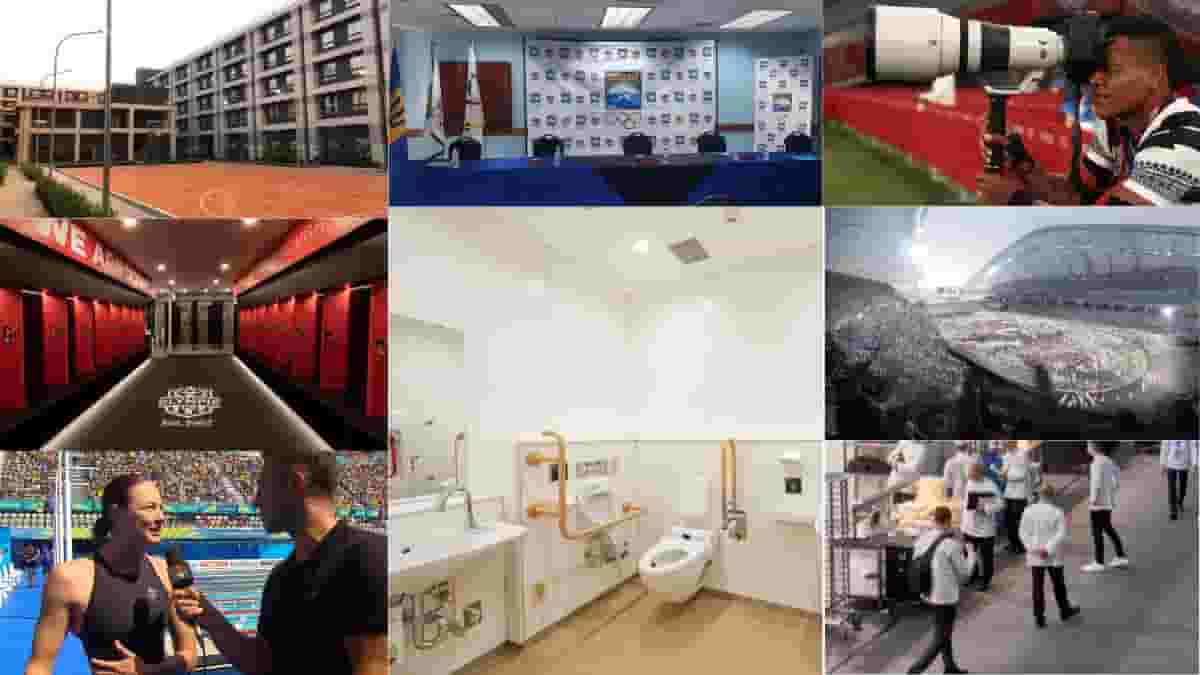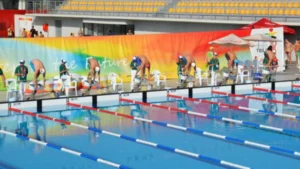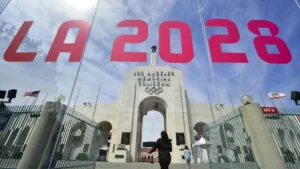The Olympic Games is a spectacle of athletic skill and global unity demanding an intricate symphony of facilities to support the competition and showcase it to the world. Beyond the playing surfaces and spectator stands, hidden infrastructure hums with activity, catering to athletes, officials, and spectators alike. This article will see the essential facilities that form the backbone of any Olympic venue, ensuring a smooth and successful Games.
Competition Venues
Each Olympic sport has its specific requirements, necessitating specialized competition venues. These venues are designed to offer:
- Playing Field or Surface: The centerpiece of any venue, the playing field or surface is tailored to the specific sport. From the meticulously maintained tracks of a running stadium to the pristine ice rink of a hockey arena, these surfaces are meticulously designed and built to meet the highest international standards.
- Technical Equipment and Infrastructure: Modern Olympic venues are equipped with sophisticated technology and infrastructure to ensure fair and accurate competition. This includes electronic timing systems, scoreboards, and specialized equipment for each sport, such as diving platforms in aquatics centers or starting blocks in athletics tracks.
- Safety Measures: The safety of athletes and spectators is paramount. Venues incorporate stringent safety measures, including fire safety systems, medical facilities readily accessible, and emergency protocols in place to handle any unforeseen situations.
Athlete Facilities

Elite athletes require a dedicated space to prepare for and recover from competition. Olympic venues provide:
- Warm-up and Training Areas: Adjacent to the competition areas are dedicated spaces for athletes to warm up, practice, and hone their skills before their events. These areas may include training tracks, practice pools, or gymnasium facilities, depending on the sport.
- Changing Rooms and Locker Facilities: Secure and well-equipped changing rooms with individual lockers offer athletes a space to store their belongings and change into their uniforms.
- Doping Control Facilities: Doping control remains an integral part of ensuring fair play. Olympic venues dedicate designated spaces for athletes to undergo drug testing, ensuring the integrity of the competition.
- Athlete Village: Beyond the competition venue, the athlete village serves as a home away from home for athletes throughout the Games. It consists of individual or shared living spaces, dining halls, recreational facilities, and medical centers, providing a comfortable and supportive environment for athletes to focus on their performances.
Media and Broadcasting Facilities:

The global reach of the Olympics necessitates a robust media and broadcasting infrastructure. Venues provide:
- Dedicated Press Rooms and Workspaces: Designated spaces equipped with internet access, power outlets, and communication facilities are crucial for journalists and media personnel to report on the Games effectively.
- Broadcast Centers: Olympic venues usually house central broadcast centers equipped with technology and studios to facilitate live broadcasts and international media coverage.
- Commentary Boxes and Interview Areas: Strategically positioned commentary boxes offer an unobstructed view of the competition for commentators. Additionally, designated interview areas provide a platform for athletes and officials to interact with the media.
Spectator Facilities

Spectators form the lifeblood of any sporting event, and Olympic venues strive to provide a memorable experience for them. Key spectator facilities include:
- Seating Arrangements: Tiered seating ensures optimal viewing angles for spectators, offering them a clear view of the competition. These seats can be temporary or permanent, depending on the venue’s design and intended post-Olympic use.
- Concession Stands and Food Courts: A variety of concession stands and food courts offer spectators a diverse range of food and beverage options, catering to different tastes and dietary needs.
- Merchandise Stores: Official merchandise stores within the venue allow spectators to purchase official Olympic merchandise, creating lasting memories of the Games.
- Restrooms and Sanitation Facilities: Ample well-maintained restrooms and sanitation facilities are essential for ensuring comfort and hygiene for a large number of spectators.
- Transportation and Accessibility: Easy access to and from the venue is crucial. Olympic organizers often collaborate with local transport authorities to ensure efficient and accessible transportation options for spectators, including public transport, shuttle services, and designated parking areas.
Beyond the Basics facilities
Modern Olympic venues are increasingly built with sustainability and legacy considerations in mind. This includes:
- Sustainable Design and Construction: Using eco-friendly materials, incorporating renewable energy sources, and minimizing environmental impact during construction are key aspects of sustainable venue design.
- Post-Olympic Use: Venues are often designed with long-term use in mind, allowing them to be adapted for different purposes after the Games, such as community sports facilities, cultural centers, or educational institutions. This ensures the continued use of the infrastructure and minimizes waste.
Conclusion
Behind the scenes of Olympic venues, a lot is going on to make it all work smoothly. The special places where athletes compete have top-notch technology and safety measures. Athletes have their own spaces to warm up and relax. The media helps share the excitement with the world, and spectators get to enjoy the games in comfy seats with yummy snacks. What’s cool is that the places where all this happens are designed to be eco-friendly and useful even after the games end.





















